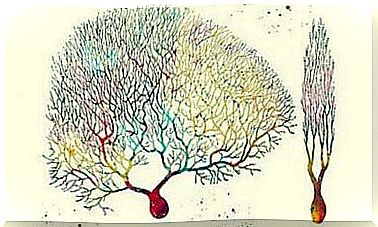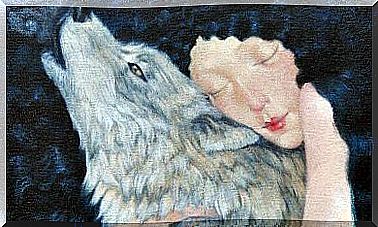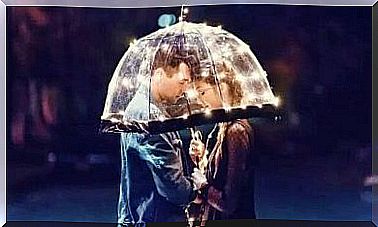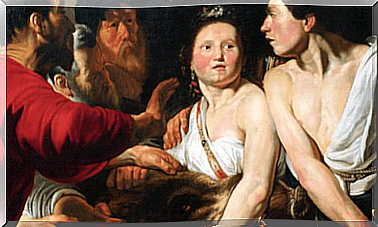Symbolic Thinking: What It Is

What is symbolic thinking? Do you know exactly what it is? How does it manifest itself? Symbolic thinking allows us to talk about what happened in the past, as well as to hypothesize what could happen in the future. In other words, it allows us to get out of the present condition to evoke another reality, past or future.
Thanks to this type of thinking, we go beyond what the senses perceive in the present moment through remembering and processing hypotheses, etc. In the next few lines we will deepen its characteristics and manifestations in more detail.
What is symbolic thinking?
We could define symbolic thinking as the ability to think about the present situation; in other words, to represent reality in the mind according to lived experience.
The Swiss psychologist Jean Piaget (1896-1980) in defining his theory on the stages of cognitive development of the child, provided a lot of information about symbolic thinking. According to Piaget, symbolic thinking “allows the child to use signifiers to refer to meanings”.
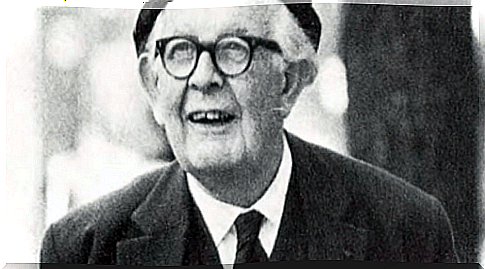
Piaget’s preoperative thinking
According to Piaget’s scheme, symbolic thinking would form part of preoperative thinking, a rather broad concept that consists of three phases during its development: 1) symbolic thinking, 2) self-centeredness (the child is unable to detach himself from his own point of sight) and 3) pre-conceptual prelogical thinking.
As can be seen, symbolic thinking for Piaget is the first preoperative subperiod, ranging from two to six years.
Manifestations of symbolic thinking
According to Piaget, during the formation and consolidation phase of symbolic thinking, a series of manifestations occur that make the child’s development possible. They are:
- Delayed imitation.
- Symbolic game.
- Verbal evocation of events not present.
- Drawings.
- Mental images.
In other words, through these manifestations symbolic thought would become latent and gradually consolidate.
How is symbolic thought expressed in the human being?
We have seen some examples concerning the early stages of life from Piaget’s point of view (from two to six years old), but now we will go deeper. Among the most important manifestations of this thought (but not all) we find the following.
The language
Language is one of the manifestations of symbolic thinking and how the latter is based on symbolization. What does it mean? That the verbal codes with which we describe reality are not what they indicate, but rather their translation into abstract terms.
We use language to represent reality through symbols, which in this case would be words. The same happens with symbolic thinking: we represent something external to the mind, but this process passes through a preliminary filter, which is that of the mind itself.
For example, during reading, symbolic thinking is activated and it is through it that we imagine the settings and characters. Again, it is a way to evoke reality outside the mind through our imagery.
Furthermore, the whole universe shaped in novels or texts of any kind was itself created in someone’s mind.
The symbolic game
Symbolic play is another manifestation of symbolic thinking. It acquires a certain relevance in the early stages of life, that is, in infancy, when the child’s development is in full expansion. For this reason, it is extremely important for development, especially for the first social relationships and for the acquisition of social conventions.
Through symbolic play, children represent professions, characters, the use of objects, roles by making use of different toys or objects. They also attribute properties to inanimate objects (for example, pretending a banana is a phone).
The symbolic game manifests itself as the child already possesses certain cognitive resources ; among these abstraction, analogy (equating two objects that have common characteristics) and the same symbolic thought.
According to Piaget, symbolic play occurs around the age of two, when the child has an idea of a permanent object (that is, he understands that when an object leaves his field of vision it does not cease to exist). Beyond age, we never stop playing (we do it for life!). And play almost always equates to learning.

Draw and paint
In drawing children and adults graphically represent a reality (or multiple realities), which is often not in front of us. In other words, we shape what we wish to evoke through symbols (the drawing itself) thanks to symbolic thinking, which is the ability to use signifiers to refer to meanings.
Thus, in a certain sense, both drawing and painting allow us to represent something external, but also ideas that inhabit our mind. This is the symbolization.
On a cultural and social level, in the drawings we find a large part of our memory, and the memory of our ancestors (cave paintings, hieroglyphs…). They are the treasure chest of history that has led us here.
It is also well known that color drawings have allowed many cultures to convey their own brand identity, to keep a trace of their distinctive characteristics and a legacy to be preserved beyond physical survival. We can find a clear example in the flags and their drawings and illustrations.



